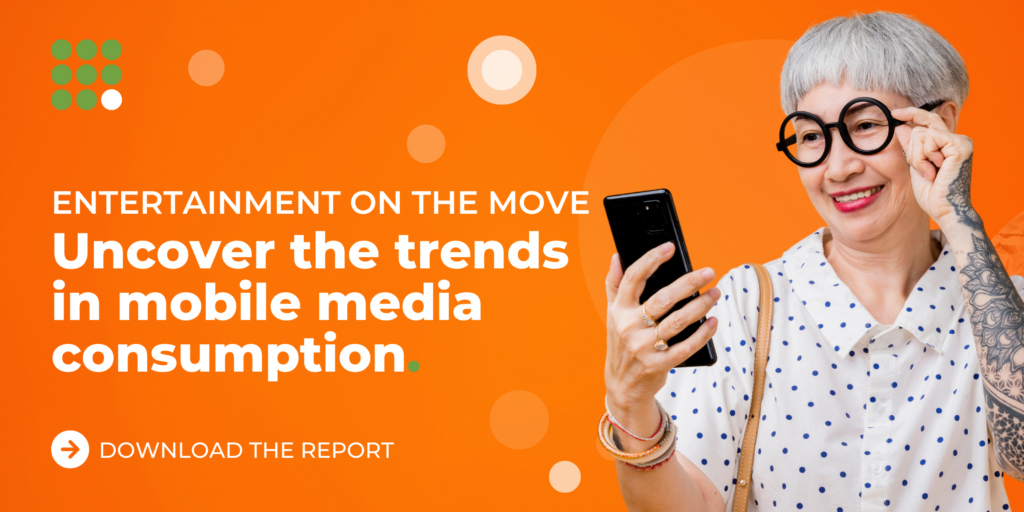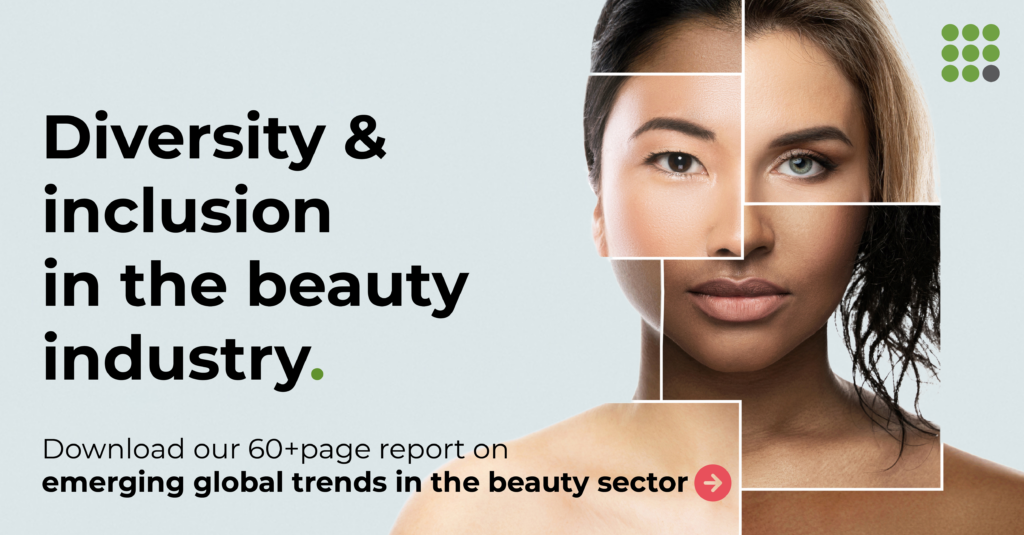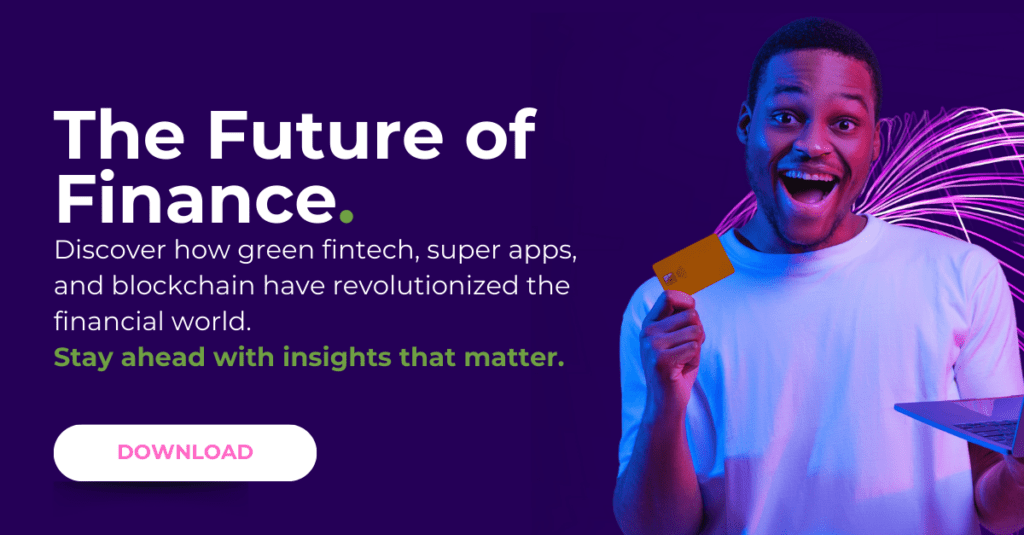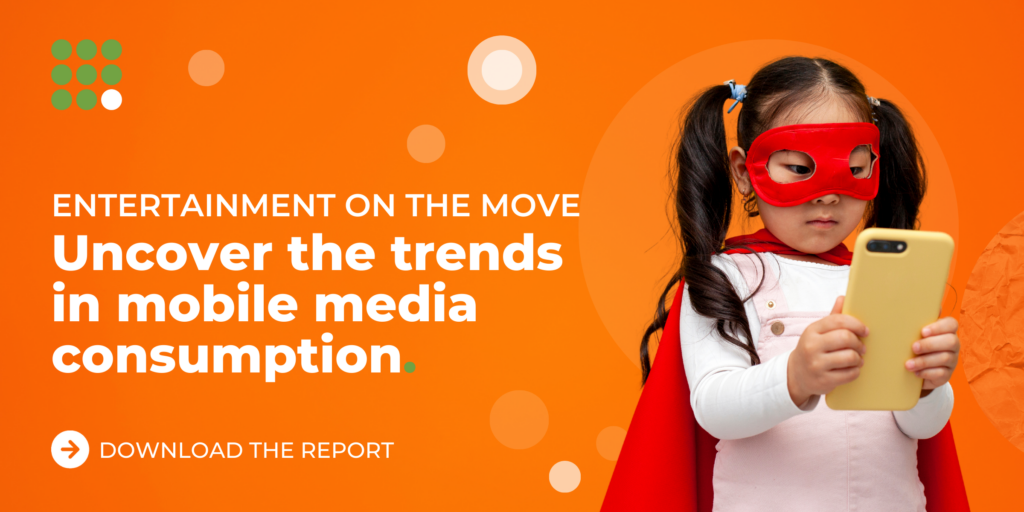Imagine you’re a digital marketer for an online retailer specialising in fitness gear. You’ve just launched a new line of eco-friendly yoga mats, and you’re tasked with maximising sales through your website. You test two different product page versions to see which drives more purchases.
Version A features a prominent “Limited Time Offer” banner at the top, while Version B includes a series of customer testimonials right beneath the product title. The results of this A/B test could significantly affect your sales figures and offer deeper insights into what motivates your customers to buy.
Such is the power of A/B testing, a method companies of all sizes use to make data-driven decisions that refine user experiences and improve conversion rates.
A/B testing provides a data-driven solution to optimise website effectiveness without the guesswork. By comparing two versions of a page or element directly against each other, brands can see which changes produce positive outcomes and which ones do not, leading to better business results and a deeper understanding of customer behaviour.
Whether you’re looking to increase conversion rates, enhance user engagement, or drive more sales, effective A/B testing is the key to achieving your goals precisely and confidently.
A/B testing, or split testing, is a method in which two versions of a webpage or app are compared to determine which performs better. Imagine you’re at the helm of a ship; A/B testing gives you the navigational tools to steer more accurately toward your desired destination—increased sales, more sign-ups, or any other business goal. It involves showing the original version (A) and a modified version (B), where a single element may differ, such as the colour of a call-to-action button or the layout of a landing page, to similar visitors simultaneously. The version that outperforms the other in achieving a predetermined goal is then used moving forward.
›
The Importance of A/B testing and ROI
The compelling advantage of A/B testing is its direct contribution to enhancing business metrics and boosting return on investment (ROI).
A recent study by eConsultancy shows that companies that use A/B testing are twice as likely to report significant improvements in conversion rates.
Online retailers frequently use A/B testing to optimise website leads and increase conversion rates. This includes split testing product pages and online advertisements, such as Google Shopping Ads. By A/B testing different product page layouts, retailers can identify a version that increases their sales, impacting annual revenue. Similarly, SaaS providers test and optimise their landing pages through A/B testing to find the version that increases user sign-ups, directly improving their bottom line.
A/B testing is less about guessing and more about evidence-based decision-making, ensuring every change to your interface is a strategic enhancement, not just a cosmetic tweak.
Preparing for A/B Testing
1. Setting Objectives
Before launching an A/B test, defining clear, measurable objectives is critical. These objectives should be specific, quantifiable, and aligned with broader business goals. Common goals include increasing conversion rates, reducing bounce rates, or boosting the average order value. The clarity of these objectives determines the test’s focus and, ultimately, its success.
2. Identifying Key Elements to Test
Choosing the right elements on your website for A/B testing can significantly affect the outcome. High-impact elements often include:
- CTAs: Testing variations in the text, color, or size of buttons to see which drives more clicks.
- Layouts: Comparing different arrangements of elements on a page to determine which layout keeps visitors engaged longer.
- Content: Tweaking headlines, product descriptions, or the length of informational content to optimise readability and conversion.
- Images and Videos: Assessing different images or video styles to see which leads to higher engagement or sales.
3. Understanding Your Audience
Effective A/B testing requires a deep understanding of your target audience. Knowing who your users are, what they value, and how they interact with your website can guide what you test and how you interpret the data from those tests.
Data Analytics Snapshots:
Utilising tools like Google Analytics, heatmaps, or session recordings can provide insights into user behaviour. Heatmaps, for example, can show where users are most likely to click, how far they scroll, and which parts of your site draw the most attention. These tools can highlight areas of the site that are performing well or underperforming, guiding where to focus your testing efforts.
Importance of Audience Insights:
Understanding user behaviour through these tools helps tailor the A/B testing efforts to meet your audience’s needs and preferences, leading to more successful outcomes. For instance, if heatmaps show that users frequently abandon a long signup form, testing shorter versions or different layouts of the form could reduce bounce rates and increase conversions.
These preparatory steps—setting objectives, identifying key elements, and understanding the audience—create a strong foundation for successful A/B testing. By meticulously planning and aligning tests with strategic business goals, companies can ensure that their efforts lead to valuable, actionable insights that drive growth and improvement.
Designing A/B Tests
Developing Hypotheses
A well-crafted hypothesis is the cornerstone of any successful A/B test. It sets the stage for what you’re testing and predicts the outcome. A strong hypothesis is based on data-driven insights and clearly states what change is being tested, why, and its expected impact.
Guidance on Formulating Hypotheses:
- Start with Data: Analyze your current data to identify trends and areas for improvement. For instance, if data shows a high exit rate from a checkout page, you might hypothesise that simplifying the page could retain more visitors.
- Be Specific: A hypothesis should clearly state the expected change. For example, “Changing the CTA button from green to red will increase click-through rates by 5%,” rather than “Changing the CTA button colour will make it more noticeable.”
- Link to Business Goals: Ensure the hypothesis aligns with broader business objectives, enhancing its relevance and priority.
Examples:
- Good Hypothesis: “Adding customer testimonials to the product page will increase conversions by 10% because trust signals boost buyer confidence.”
- Poor Hypothesis: “Changing things on the product page will improve it.”
Creating Variations
Once you have a solid hypothesis, the next step is to create the variations that will be tested. This involves tweaking one or more elements on your webpage based on your hypothesis.
Instructions for Creating Variations:
- Single Variable at a Time: To understand what changes affect outcomes, modify only one variable per test. If testing a CTA button, change the color or the text, but not both simultaneously.
- Use Design Tools: Utilise web design tools to create these variations. Ensure that the changes remain true to your brand’s style and are visually appealing.
- Preview and Test Internally: Before going live, preview variations internally to catch potential issues.
Choosing the Right Tools
Selecting the appropriate tools is crucial for effectively running A/B tests. The right tool can simplify testing, provide accurate data, and help interpret results effectively.
By following these steps—developing a strong hypothesis, creating thoughtful variations, and choosing the right tools—you can design effective A/B tests that lead to meaningful insights and significant improvements in website performance. This strategic approach ensures that each test is set up for success, contributing to better user experiences and increased business outcomes.
Implementing A/B Tests
Effective implementation of A/B tests is critical to achieving reliable results that can inform strategic decisions.
Test Setup and Configuration
Setting up an A/B test properly ensures that the data you collect is accurate and that the test runs smoothly without affecting the user experience negatively.
Step-by-step Guide on Setting Up Tests:
- Define Your Control and Variation: Start by identifying your control version (the current version) and the variation that includes the changes based on your hypothesis.
- Choose the Type of Test: Decide whether you need a simple A/B test or a more complex split URL test. Split URL testing is useful when major changes are tested, as it redirects visitors to a different URL.
- Set Up the Test in Your Chosen Tool: Using a platform like Google Optimise, create your experiment by setting up the control and variations. Input the URLs for each and define the percentage of traffic directed to each version.
- Implement Tracking: Ensure that your analytics tracking is correctly set up to measure results from each test version. This may involve configuring goals in Google Analytics or custom-tracking events.
Interactive Checklists or Setup Diagrams:
A checklist can help ensure all steps are followed, such as:
- Define control and variation
- Choose testing type
- Configure the test in the tool
- Set traffic allocation
- Implement tracking codes
Best Practices for Running Tests
Once your test is live, managing it effectively is key to obtaining useful data.
Tips for Managing and Monitoring A/B Tests:
- Monitor Performance Regularly: Check the performance of your test at regular intervals to ensure there are no unexpected issues.
- Allow Sufficient Run Time: Let the test run long enough to reach statistical significance, usually until the results stabilise. You have enough data to make a confident decision.
- Be Prepared to Iterate: Depending on the results, be prepared to make further adjustments and rerun the test. Optimisation is an ongoing process.
Visual Dos and Don’ts Infographics
To help visualise best practices, create an infographic that highlights the dos and don’ts:
- Do: Test one change at a time, ensure tests are statistically significant, and use clear success metrics.
- Don’t Change multiple elements at once, end tests prematurely, and ignore variations in user behaviour.
Statistical Significance and Sample Size
Understanding these concepts is crucial for interpreting A/B test results accurately.
Explanation of Key Statistical Concepts:
- Statistical Significance: This measures whether the outcome of your test is likely due to the changes made rather than random chance. Typically, a result is considered statistically significant if the probability of the result occurring by chance is less than 5%.
- Sample Size: The number of users you need in your test to reliably detect a difference between versions. A sample size that is too small may not accurately reflect the broader audience.
Graphs and Calculators:
- Provide a graph showing how increasing sample size reduces the margin of error, enhancing confidence in the results.
- Link to or embed a sample size calculator, allowing users to input their data (like baseline conversion rate and expected improvement) to determine how long to run their tests.
By following these guidelines and utilising the right tools and methodologies, you can implement A/B tests that provide valuable insights into user behavior and preferences, enabling data-driven decision-making that boosts user engagement and business performance.
Analyzing Test Results
Once your A/B test has concluded, the next crucial step is analyzing the results. This phase is about interpreting the data collected, understanding the statistical relevance of the findings, and making informed decisions based on the test outcomes.
Interpreting Data
Interpreting the results of an A/B test involves more than just identifying which variation performed better. It requires a detailed analysis to understand why certain outcomes occurred and how they can inform future business decisions.
How to Read Test Results:
- Conversion Rates: Compare the conversion rates of each variation against the control. Look not only at which had the highest rate but also consider the context of the changes made.
- Segmented Results: Break down the data by different demographics, device types, or user behaviours to see if there are significant differences in how certain groups reacted to the variations.
- Consistency Over Time: Evaluate how the results varied over the course of the test to identify any patterns that could influence your interpretation, such as a weekend vs. weekday performance.
Statistical Analysis
A deeper dive into the statistical analysis will confirm whether the observed differences in your A/B test results are statistically significant and not just due to random chance.
Understanding Statistical Significance and Other Metrics:
- P-value: This metric helps determine the significance of your results. A p-value less than 0.05 typically indicates that the differences are statistically significant.
- Confidence Interval: This range estimates where the true conversion rate lies with a certain level of confidence, usually 95%.
- Lift: This is the percentage increase or decrease in the performance metric you are testing for, calculated from the baseline of the control group.
Making Informed Decisions
With the data interpreted and the statistical analysis complete, the final step is to decide how to act on the insights gained from your A/B test.
Guidelines on How to Act on Test Results:
- Implement Winning Variations: If one variation significantly outperforms the control, consider implementing it across the site.
- Further Testing: If results are inconclusive or the lift is minimal, running additional tests with adjusted variables or targeting a different user segment may be beneficial.
- Scale or Pivot: Depending on the impact of the changes tested, decide whether to scale these changes up to affect more of your business or to pivot and try a different approach entirely.
Decision Trees or Flowcharts:
Create a decision tree or flowchart that outlines the decision-making process following an A/B test. This could include nodes that consider whether the test was statistically significant, whether the results align with business goals, and what follow-up actions (like further testing, full implementation, or abandonment of the change) should be taken based on different scenarios.
By thoroughly analyzing A/B test results through data interpretation, statistical analysis, and strategic decision-making, organisations can ensure that they are making informed decisions that will enhance their website’s user experience and improve overall business performance. This data-driven approach minimises risks associated with website changes and ensures that resources are invested in modifications that provide real value.
Beyond Basic A/B Testing
Once you have mastered basic A/B testing, you can explore more sophisticated techniques that offer deeper insights and potentially greater improvements in user experience and conversion rates. This section delves into advanced testing strategies and the importance of ongoing optimisation through iterative testing.
Advanced Testing Techniques
Advanced testing methods allow you to explore more complex hypotheses about user behaviour and website performance, often involving multiple variables or entire user journeys.
Multivariate Testing (MVT):
- Overview: Unlike A/B testing, which tests one variable at a time, multivariate testing allows you to test multiple variables simultaneously to see which combination produces the best outcome.
- Application: For example, you might test different versions of an image, headline, and button on a landing page all at once to determine the best combination of elements.
- Benefits: This approach can significantly speed up the testing process and is particularly useful for optimising pages with multiple elements of interest.
Multipage Testing:
- Overview: Also known as “funnel testing,” this technique involves testing variations across multiple pages that make up a user journey or funnel.
- Application: You might test variations of both the product and checkout pages to see which combination leads to higher conversion rates.
- Benefits: Multipage testing helps ensure consistency in messaging and user experience across multiple stages of the user journey, which can improve overall conversion rates.
Continuous Improvement and Iteration
The goal of A/B testing is not just to find a winning variation but to continually refine and enhance your website based on user feedback and behaviour.
Importance of Ongoing Optimisation:
- Iterative Process: Optimisation is an ongoing process that involves continually testing and refining website elements based on user data and business objectives.
- Learning from Each Test: Each test provides valuable insights into whether a variation wins. These insights can inform future tests, leading to better user experiences and higher conversion rates.
Iterative Testing Strategies:
- Start with Broad Tests: Begin with broader tests to identify which elements have the most significant impact on user behaviour.
- Refine and Repeat: Use the insights gained to refine your hypotheses and test more specific variations.
- Expand Testing: Once you’ve optimised major elements, expand your testing to less prominent components that could still affect user experience and conversions.
Timelines and Case Studies:
- Timeline Example: Show a timeline that outlines an annual testing strategy, with phases for broad testing, refinement, and expansion.
- Case Study: Present a case study of a company that implemented continuous testing. Highlight how iterative testing helped them achieve a significant, sustained increase in conversion rates over time. For instance, a tech company could use iterative testing to fine-tune its sign-up process, resulting in a 50% increase in user registrations over a year.
By advancing beyond basic A/B testing and embracing more complex and continuous testing strategies, companies can optimise their websites more effectively and foster a culture of data-driven decision-making. This approach leads to improvements that align with user preferences and business goals, ensuring sustained growth and a competitive edge in the market.
Common Pitfalls and How to Avoid Them
A/B testing is a powerful tool for website optimisation, but common pitfalls can undermine its effectiveness. This section explores typical errors that occur during the testing process and provides strategies to ensure the validity and reliability of your tests.
List of Common Mistakes
Identifying Errors and Solutions:
- Testing Too Many Changes at Once: It can make determining which change affected the outcome difficult.
- Solution: Focus on testing one change at a time or use multivariate testing for simultaneous changes and analyze the impact of each element separately.
- Not Allowing Enough Time for the Test to Run: Ending a test too soon can lead to conclusions that aren’t statistically significant.
- Solution: Ensure each test runs long enough to collect adequate data, reaching statistical significance before making decisions.
- Testing Without a Clear Hypothesis: Starting tests without a clear, data-backed hypothesis leads to unclear outcomes.
- Solution: Develop a precise hypothesis for each test based on thorough data analysis and clear business objectives.
- Ignoring User Segmentation: Different segments may react differently to the same change.
- Solution: Segment your audience and analyze how different groups respond to each variation.
Visuals of Pitfalls vs. Best Practices:
- Create side-by-side infographics showing examples of these mistakes versus best practices. For example, visually compare the outcome of a test that changed multiple elements simultaneously against one that tested a single change.
Ensuring Validity and Reliability
Maintaining the integrity of your A/B tests is crucial for obtaining reliable, actionable insights.
Tips on Maintaining Test Integrity:
- Use Proper Randomisation: Ensure that the distribution of users between the control and test groups is random to avoid selection bias.
- Tool Tip: Utilise tools that automatically handle randomisation to avoid manual errors.
- Control External Factors: Holidays, marketing campaigns, or significant news events can skew test results.
- Solution: Monitor external factors, adjust the testing period, or filter the data to account for anomalies.
- Ensure Consistent Test Conditions: Changes in the testing environment or platform during the test can invalidate results.
- Solution: Keep the testing conditions consistent throughout the test period and verify configuration settings regularly.
- Validate Test Setup Before Going Live: A misconfigured test can lead to incorrect data interpretation.
- Solution: Run a smaller pilot test or use a checklist to ensure every test element is correctly set up before full deployment.
Troubleshooting Guide with Graphic Aids:
- Develop a troubleshooting guide that includes common scenarios where A/B test integrity might be compromised. Include flowcharts or decision trees that help identify and resolve issues such as data discrepancies, unexpected user behaviour, or sudden changes in conversion rates.
- Example Graphic Aid: A flowchart that helps determine actions when test results seem inconsistent with historical data or benchmarks. Steps might include checking configuration settings, reviewing segmentation criteria, or extending the test duration.
By understanding and avoiding these common pitfalls and maintaining rigorous standards for validity and reliability, organisations can ensure that their A/B testing efforts lead to meaningful improvements and robust data-driven decisions. This approach not only enhances the effectiveness of current tests but also builds a foundation for future testing strategies that are even more successful.
A/B Testing Case Studies
A/B testing has proven to be a critical tool for businesses aiming to optimise their online presence based on data-driven decisions. Here, we delve into some specific real-life case studies from different industries, highlighting the successes and lessons from A/B testing.
Success Stories
E-commerce: Humana
- Overview: Humana, a well-known health insurance company, conducted an A/B test to increase click-through rates on one of their primary campaign landing pages. They tested the simplicity and message of their banner and CTA.
- Changes Tested: The original banner had a lot of information and a standard “Shop Medicare Plans” button. The test variation simplified the message and changed the button text to “Get Started Now.”
- Results: The variation led to a 433% increase in click-through rates to the insurance plans page.
B2B: SAP
- Overview: SAP, a leader in enterprise application software, tested the copy of their CTA on a product page. The hypothesis was that a more action-oriented CTA would increase engagement.
- Changes Tested: The original CTA read “Learn more,” which was changed to “See it in action” in the variation.
- Results: This simple change in wording resulted in a 32% increase in clicks.
.
Digital Media: The Guardian
- Overview: The Guardian tested different wordings for their support and donation CTAs to determine which would more effectively encourage readers to contribute financially.
- Results: The test revealed that a direct ask for contributions using emotive language resulted in a higher click-through rate than a more generic request for support.
- Lesson: This A/B test highlighted the importance of emotional resonance in messaging, especially for non-profit or cause-based initiatives.
Travel Industry: Expedia
- Overview: Expedia conducted A/B testing to optimise hotel booking conversions on their site by altering the display of discount offers.
- Changes Tested: They tested the visibility and presentation of savings messages (e.g., showing a percentage off versus a specific dollar amount saved).
- Results: Showing the amount of money saved led to a slight decrease in conversion rates, contrary to expectations.
- Lesson: The test underscored the potential for “over-optimising” to backfire and the need to balance how offers are presented to avoid overwhelming customers.
Final Checklist of A/B Testing Steps
To help ensure your A/B testing journey is structured and effective, here is a visual checklist encapsulating the process:
- Define Objectives: Clearly state what you aim to achieve.
- Formulate Hypotheses: Base your assumptions on data and prior insights.
- Select the Testing Tool: Choose a platform that suits your scale and complexity needs.
- Design the Test: Create variations based precisely on your hypotheses.
- Run the Test: Ensure the test is long enough to gather meaningful data.
- Analyze Results: Use statistical analysis to interpret the outcomes.
- Implement Changes: Apply successful variations or further refine and test.
- Repeat: Use insights gained to continuously improve further testing.
Regardless of the outcome, every test is a step forward in understanding your users better and refining your digital offerings to meet their needs more effectively. The journey of optimisation is continuous, and each effort builds upon the last, opening new doors to innovation and growth.
Harness the power of A/B testing to start making informed decisions that propel your business forward. Your next breakthrough could be just one test away.


















 Senior Marketing Executive
Senior Marketing Executive Sales & Marketing
Sales & Marketing Vital Strategies
Vital Strategies
 Customer Intelligence Director
Customer Intelligence Director